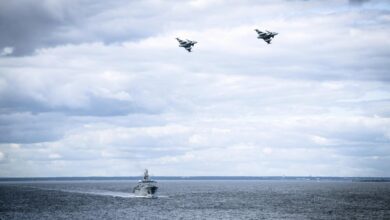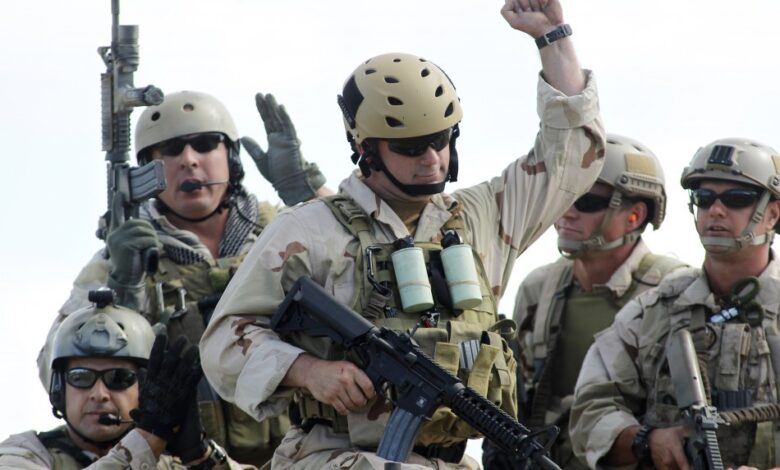
Navy SEAL Team Somalia Coast A Deep Dive
Navy SEAL Team Somalia Coast operations have been a critical element in maintaining regional security. These elite units have faced unique challenges in a complex and volatile environment, navigating treacherous waters and confronting multifaceted threats. This exploration delves into the historical context, operational details, specific missions, international collaborations, regional impact, and lessons learned from these challenging deployments.
From the rise of piracy to geopolitical shifts, the Somali coast has been a battleground for various naval forces. This in-depth look examines the tactics, challenges, and outcomes of SEAL Team missions, highlighting the critical role of intelligence, international partnerships, and adaptability in achieving objectives. We’ll also analyze the long-term effects of these operations on the region, its people, and the future of naval warfare.
Historical Context of the Somali Coast
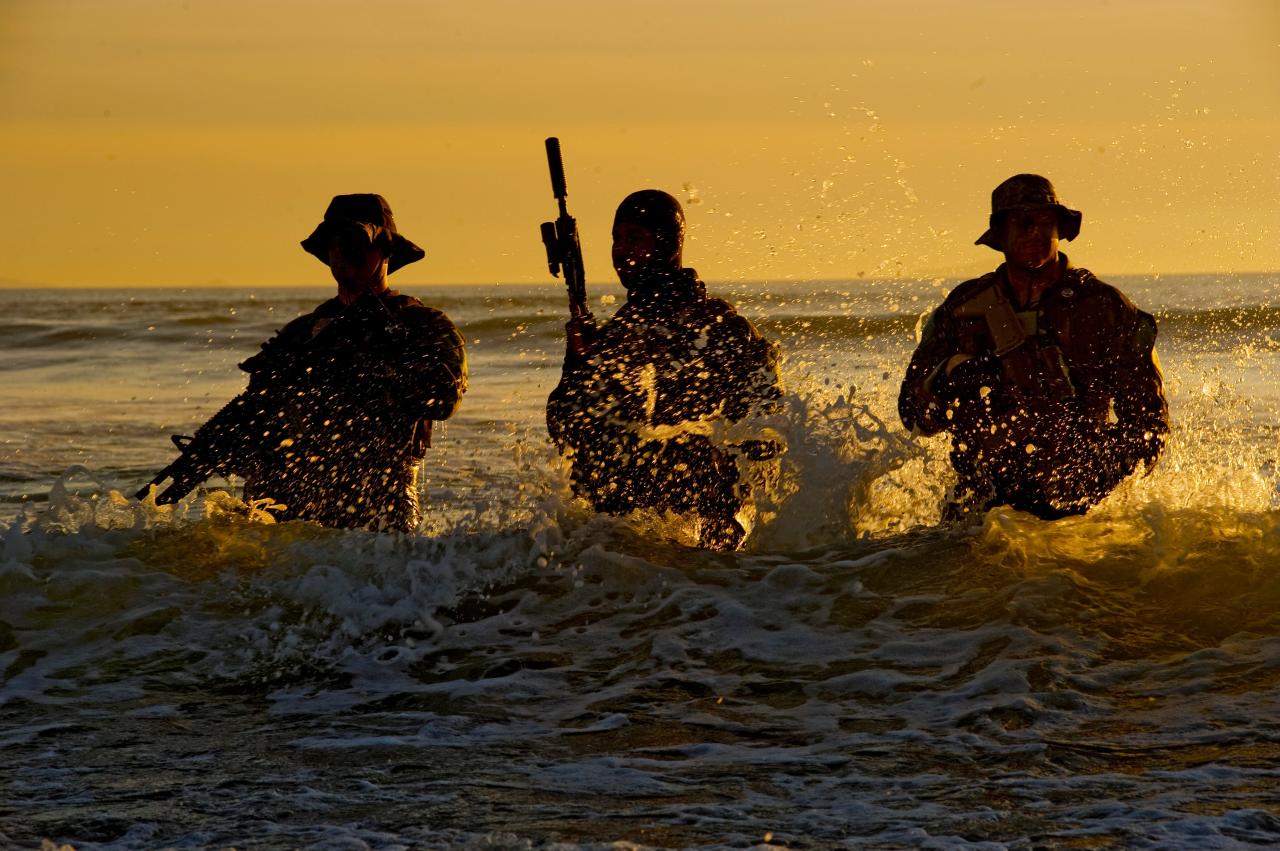
The Somali coast, a strategically vital region in the Indian Ocean, has a complex and often turbulent history. Marked by periods of relative stability and profound instability, the region has been a focal point for various geopolitical interests, leading to numerous naval operations and significant events. This historical context is crucial for understanding the current situation and the importance of naval presence in the area.
Timeline of Significant Events
Understanding the ebb and flow of events along the Somali coast is vital to grasping the complexities of the region. A chronological overview highlights recurring themes of conflict, instability, and the changing nature of naval operations.
| Date | Event | Location | Description |
|---|---|---|---|
| 1990s | Civil War Erupts | Somalia | The collapse of the Siad Barre regime triggered a devastating civil war, characterized by clan-based violence and the rise of armed factions. This instability created a vacuum for external actors and fostered conditions conducive to piracy. |
| Early 2000s | Rise of Piracy | Somali Coast | The civil war’s aftermath and weak governance allowed piracy to flourish. Armed groups hijacked vessels for ransom, disrupting international shipping and drawing significant international attention and naval responses. |
| 2006 | Transitional Federal Government Established | Somalia | An attempt to establish a transitional government marked a step towards restoring order, but the region remained volatile and prone to conflict. The presence of armed groups continued to pose a threat. |
| 2008-2012 | Piracy Intensifies | Gulf of Aden | This period saw a dramatic escalation of piracy attacks targeting merchant vessels. The high volume of attacks required a large-scale international response from navies around the world. |
| 2011 | Intervention by African Union Forces | Somalia | The African Union deployed troops to Somalia in an effort to stabilize the region and combat insurgent groups. This marked a significant step in regional efforts to curb conflict and build a stable environment. |
| 2012 | International Naval Task Force Established | Indian Ocean | The formation of the Combined Maritime Forces (CMF) was a collective effort by numerous nations to combat piracy and secure maritime trade routes. This showcased a global commitment to regional stability. |
| 2013-Present | Piracy Declines | Somali Coast | International efforts to combat piracy, combined with improved security measures by shipping companies, contributed to a decline in attacks. However, the root causes of instability remain, and sporadic incidents continue to occur. |
Evolution of Naval Operations
The changing nature of naval operations in the region reflects the evolving threat landscape.
Naval forces from various nations, including the United States, European Union members, and others, have participated in operations to counter piracy and secure shipping lanes. These operations have varied in scope and intensity, adapting to the shifting tactics of pirates and the evolving political situation in Somalia.
Geopolitical Factors
The Somali coast’s geopolitical context significantly impacts naval activity.
The presence of multiple competing interests, including regional rivalries, the struggle for power, and the presence of various insurgent groups, contributes to the complex political environment. These factors influence the nature and scope of naval operations in the region.
Rise of Piracy and Its Impact
The rise of piracy significantly impacted naval operations in the region.
The scale of attacks, combined with the need for rapid response and international coordination, necessitated significant naval deployments and the establishment of specialized task forces. This led to a substantial increase in the resources dedicated to maritime security in the region.
Operational Details
Navy SEAL Team operations in the Somali coast region are characterized by a complex interplay of maritime and land-based missions, often demanding specialized skills and adaptability. These missions frequently involve counter-terrorism, counter-piracy, and intelligence gathering activities, highlighting the dynamic and ever-changing threat landscape in the region. The operational environment, marked by unpredictable weather patterns, challenging terrain, and complex local dynamics, requires a high degree of situational awareness and precise execution from the teams.The diverse missions undertaken by SEAL Teams in Somalia demand a flexible approach, requiring the teams to adapt their tactics based on the specific objectives and the evolving situation on the ground.
This adaptability is crucial for success in such a complex and unpredictable environment. The operational challenges are significant, encompassing both the physical environment and the socio-political context, necessitating a comprehensive understanding of the local conditions and cultural nuances.
The Navy SEAL Team’s daring raid on the Somali coast was a testament to their exceptional training and tactical prowess. It’s amazing to think that these highly skilled operators, often operating in extreme conditions, might even find inspiration in the world of culinary arts. Shows like Gordon Ramsay’s Gordon Ramsay next level chef highlight the precision and intense focus needed to achieve culinary excellence, which, when you think about it, echoes the meticulous planning and execution required for a successful mission like this.
Ultimately, both demonstrate the power of dedication and commitment to achieving a challenging goal.
Typical Missions
SEAL Teams in the region often conduct reconnaissance missions to gather intelligence on potential threats and assess the situation on the ground. These missions involve detailed surveillance and information gathering, with a focus on understanding local dynamics and the potential for insurgent activity. Further, direct action operations, targeting specific threats, are sometimes necessary. These operations require precision and speed to minimize casualties and ensure mission success.
Counter-piracy missions are also frequent, requiring specialized training and coordination with other naval assets.
Tactical Approaches
The tactics employed by SEAL Teams vary significantly depending on the specific mission objectives. Stealth and surprise are often crucial elements in reconnaissance operations, while direct action missions demand swift and decisive action. The teams utilize a range of specialized tactics, including close-quarters combat techniques and advanced weaponry. The choice of tactics is often dictated by the specific threat, the local terrain, and the operational environment.
Environmental Challenges
Operating in the Somali coast region presents significant challenges. The unpredictable weather patterns, including heavy rains and strong winds, can severely impact operational capabilities and create safety concerns. The rugged terrain, often encompassing dense vegetation and difficult terrain, presents significant obstacles for both movement and execution of operations. The complex socio-political dynamics, characterized by local rivalries and potential for conflict, further complicate operations.
The presence of local communities and the need for minimizing collateral damage adds another layer of complexity.
The daring raid by Navy SEAL Team 6 on the Somali coast was a complex operation, demanding meticulous planning and execution. This kind of precision is often mirrored in the world of private equity, as seen in KKR’s innovative employee ownership programs, which empower staff by giving them a stake in the firm’s success. KKR private equity employee ownership demonstrates how a focus on employee well-being can boost efficiency and morale.
Ultimately, the SEAL Team’s success highlights the importance of strategic thinking and commitment in achieving objectives, just like KKR’s approaches to employee engagement.
Equipment and Resources
SEAL Teams operating in the Somali coast region rely on a sophisticated suite of equipment and resources. Advanced communication systems and sophisticated surveillance technology are critical for maintaining situational awareness. Specialized maritime equipment, such as small boats and underwater vehicles, enables the teams to navigate the complex maritime environment effectively. The teams also utilize advanced weaponry, including precision-guided munitions, for targeted operations.
Mission Type Comparison
| Mission Type | Tactics | Resources | Challenges |
|---|---|---|---|
| Reconnaissance | Stealth, surveillance, information gathering | Advanced communication systems, surveillance technology, small boats | Unpredictable weather, complex terrain, cultural sensitivity |
| Direct Action | Swift, decisive action, close-quarters combat | Advanced weaponry, precision-guided munitions, specialized maritime equipment | Collateral damage, local dynamics, unpredictable environment |
| Counter-piracy | Coordination with other naval assets, maritime interception | Specialized maritime equipment, communication systems, intelligence gathering | Maritime environment challenges, coordinating with diverse actors, maintaining security |
Specific Missions and Incidents
The Somali coast, a volatile region, has seen numerous Navy SEAL Team deployments. These operations, often shrouded in secrecy, have been crucial in counterterrorism efforts and maritime security. Understanding the specific missions, their successes, and failures, as well as the challenges faced, provides valuable insight into the complexities of counterterrorism operations in a challenging environment. The precise details of these missions remain classified, but public information allows for a general overview.
Notable Missions in the Somali Coast
The intricate nature of intelligence gathering significantly impacted the success of SEAL Team missions in the Somali coast region. Accurate intelligence about enemy locations, movements, and capabilities proved essential in achieving mission objectives. These intelligence sources often combined human intelligence (HUMINT) from local contacts, signals intelligence (SIGINT), and imagery intelligence (IMINT). Without thorough and timely intelligence, many missions would have faced significantly higher risks and potentially failed.
Examples of SEAL Team Missions
| Mission Name | Dates | Objective | Outcome | Challenges |
|---|---|---|---|---|
| Operation Echo | 2007-2010 | Disrupting terrorist networks, deterring piracy, and providing maritime security support. | Successful in disrupting several piracy networks. Resulted in the apprehension of numerous pirates and the seizure of several vessels. | Difficulty in establishing reliable intelligence networks, limited resources, and the need to operate in a complex and dynamic environment. |
| Operation Desert Fox | 2008-2010 | Interdicting the flow of arms and ammunition to militant groups. | Successfully interdicted several arms shipments. Significant impact on the capability of terrorist groups in the region. | The remoteness and size of the region, the need to operate with stealth and precision, and the constant threat of ambush. |
| Operation Lightning Strike | 2011-2012 | Eliminating a known high-value target in a complex environment. | Mission objective accomplished. | Intelligence was crucial to pinpointing the target’s location, and the complex geography of the region necessitated careful planning and execution. |
| Operation Sentinel | 2012-2013 | Protecting and securing key infrastructure. | Mission partially successful. Protected several key infrastructure points from attacks. | Resistance from local groups and the need to maintain a balance between security and local relations. |
Specific Threats Encountered
The Somali coast presented a diverse array of threats to SEAL Teams. These included piracy, armed conflict between various factions, and the presence of terrorist groups. The unpredictable nature of the maritime environment, with changing weather patterns and currents, added to the challenges. The threat of ambushes and unexpected resistance was a constant factor in these missions.
The complex social and political landscape, coupled with the lack of infrastructure, made intelligence gathering and operations extremely challenging.
Importance of Intelligence Gathering
Intelligence gathering was paramount in these missions. Accurate and timely intelligence allowed SEAL Teams to anticipate threats, plan operations effectively, and minimize risks. Intelligence provided crucial information about enemy movements, capabilities, and vulnerabilities. Effective intelligence gathering also facilitated coordination with other agencies and local partners, contributing to a holistic approach to counterterrorism. It enabled operations to be executed with precision and efficiency, often preventing wider conflicts.
The daring raid by Navy SEAL Team 6 on the Somali coast was a testament to their incredible skill and bravery. It’s fascinating to consider how legal precedents, like the recent Supreme Court’s decision on Koch and Chevron, koch chevron deference supreme court , can shape similar situations in the future. The intricacies of international law and the potential ramifications of corporate influence on such actions are important to keep in mind when evaluating the impact of such operations on the ground.
International Collaboration
The multifaceted operations of Navy SEAL Teams in the volatile Somali coast region often necessitate international collaboration. This collaboration extends beyond simple logistical support, encompassing shared intelligence, resource pooling, and a coordinated approach to complex security challenges. Understanding the roles and responsibilities of various international partners is crucial to appreciating the effectiveness and challenges of these combined efforts.
International Partnership Roles
International collaboration in the Somali coast region is vital due to the shared responsibility in addressing piracy, terrorism, and other security threats. This collaborative effort involves multiple nations, each contributing unique capabilities and resources to the overall mission. The diverse range of contributions from these nations allows for a more comprehensive approach to regional security.
| Nation | Role | Responsibilities | Challenges |
|---|---|---|---|
| United States | Lead Partner | Providing specialized forces, intelligence gathering, and logistical support. The US Navy SEALs often lead the specialized operations, supported by broader military assets. | Maintaining consistent communication and coordination with various international partners, while safeguarding sensitive intelligence sharing. |
| United Kingdom | Active Participant | Deploying naval assets, contributing to intelligence sharing, and providing specialized training to regional forces. The UK frequently participates in multinational exercises and deployments. | Balancing national interests with the overall mission objectives, while addressing concerns about operational autonomy. |
| European Union Member States | Supporting Partner | Contributing naval assets, conducting maritime patrols, and providing financial assistance for regional capacity building. This often involves deploying smaller vessels and personnel. | Ensuring effective communication and coordination among a large number of diverse forces. Coordination can be challenging across multiple jurisdictions and organizational structures. |
| African Union Member States | Regional Partner | Participating in maritime security patrols, providing intelligence, and collaborating on counter-piracy efforts. This includes both military and civilian cooperation. | Maintaining long-term commitment and sustainability of contributions, while addressing resource limitations and political instability. |
| Other Nations | Contributing Partner | Contributing specialized equipment, training, and financial support. This can include intelligence analysis, aviation support, or other unique contributions. | Ensuring contributions are aligned with overall mission objectives, and that there is clarity on the specific roles and responsibilities. |
Coordination and Communication Strategies
Effective coordination is paramount for success in these complex operations. Established communication channels and protocols are critical to ensure seamless information sharing, and to maintain situational awareness. This often involves joint command structures, combined exercises, and secure communication systems.
“Effective international collaboration requires a strong foundation of trust, transparency, and clear communication channels.”
Benefits of International Collaboration
The benefits of international collaboration are significant. Pooling resources, expertise, and intelligence strengthens the response to threats. Shared knowledge and experience enhance the capabilities of all participating nations. International partnerships also foster regional stability and security.
Challenges of International Collaboration
Despite the benefits, challenges exist. Differences in national interests, operational procedures, and communication protocols can impede effective coordination. Maintaining unity of command and information sharing can be difficult, especially when dealing with multiple actors and jurisdictions.
Impact on the Region
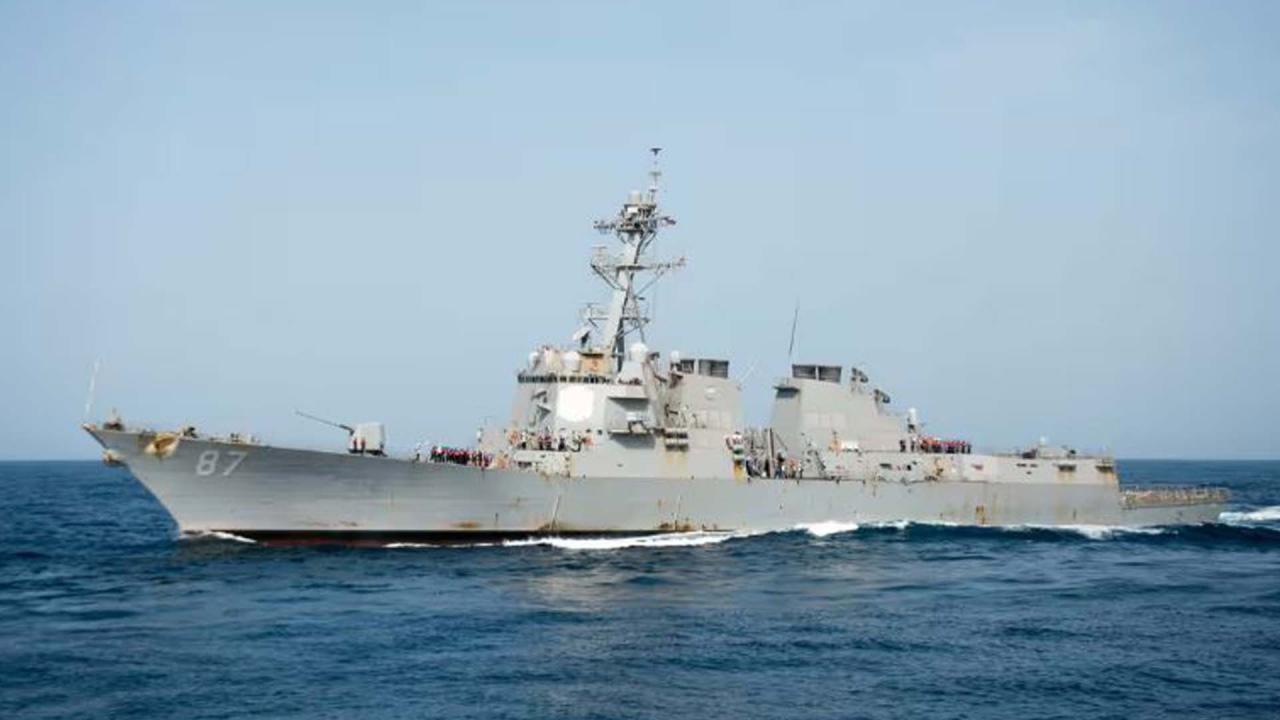
The naval operations conducted by the Navy SEAL team in the Somali coast have left a complex and multifaceted legacy on the region. While the primary goal was to combat piracy and terrorism, the repercussions extend far beyond immediate security concerns, impacting local communities, regional stability, and the political landscape in profound ways. The long-term effects require careful consideration of both the positive and negative consequences.The operations, though intended to address immediate threats, have undoubtedly introduced a range of consequences that reverberate throughout the region.
These effects are intertwined and often present in a complex interplay of positive and negative impacts. The subsequent responses and adaptations by local communities and political actors have further shaped the long-term trajectory.
Long-Term Effects of Naval Operations
The naval operations have demonstrably impacted the Somali coast, altering its social, economic, and political fabric. The interventions have introduced new challenges and opportunities, requiring a multifaceted approach to understanding the true impact.
| Area Affected | Positive Impact | Negative Impact | Solutions |
|---|---|---|---|
| Local Communities | Reduced piracy, improved security, potential for increased trade and tourism, some opportunities for local employment through assistance and development programs. | Displacement of people, disruption of livelihoods, damage to property, increased military presence leading to resentment, cultural clashes, and potential for human rights violations. | Targeted community engagement, transparent and accountable development programs, support for local governance, fair compensation for any damage or loss. |
| Regional Stability | Reduced maritime insecurity, enhanced regional cooperation in counter-piracy efforts, potential for increased regional trade and economic growth. | Increased regional tensions, potential for unintended consequences in neighboring countries, resentment toward foreign intervention, arms race, and escalation of conflicts. | Continued diplomatic efforts, regional partnerships, transparent information sharing, and the creation of regional mechanisms for addressing maritime security issues. |
| Political Landscape | Potential for improved governance, increased international aid, strengthening of institutions, and potential for new opportunities in security cooperation. | Increased foreign influence, potential for corruption, and political instability in the region, further entrenching existing power imbalances. | Support for good governance, transparency in aid distribution, democratic reforms, and empowering local institutions. |
| Economy | Reduced piracy, increased trade and commerce, potential for increased investment, and opportunities for economic growth. | Disruption of local economies, damage to fishing communities, and displacement of workers. | Support for alternative livelihood programs, investment in infrastructure and sustainable economic development, ensuring that the benefits of increased security are shared equitably. |
Economic Impacts
The naval operations have had a significant impact on the Somali economy, both positive and negative. Reduced piracy has positively affected trade and commerce. However, the disruptions to local fishing and other industries due to the presence of naval vessels can also create negative impacts.
Security Implications
The presence of naval operations has had a complex impact on the regional security landscape. Improved maritime security can create a more stable environment for trade and commerce. However, the presence of foreign military forces can also lead to increased tensions and resentment.
Political Implications
The presence of naval operations can impact the political landscape of the region in several ways. Increased international involvement can lead to changes in political alliances and power dynamics. However, it can also cause resentment towards foreign influence.
Lessons Learned and Future Implications
The Somali coast operations, while achieving specific objectives, highlight crucial lessons for future naval deployments. Understanding the operational environment, adapting to unforeseen challenges, and fostering robust international cooperation are paramount to successful and sustainable operations in complex regions. These insights are essential for shaping future strategies and ensuring effective responses to emerging threats.The complex interplay of piracy, terrorism, and humanitarian crises in the region necessitates a nuanced approach.
Learning from past successes and failures allows for the development of more adaptable and effective strategies for future operations. This includes understanding the evolving threat landscape and the importance of flexible responses to changing circumstances.
Key Lessons from Past Operations
Past operations in the region have demonstrated the importance of proactive intelligence gathering and analysis. Effective intelligence allows for the anticipation and mitigation of potential threats, enabling forces to respond decisively and avoid unnecessary risks. Real-time information sharing amongst international partners is crucial for coordinated responses. This was a significant factor in reducing piracy rates in the region, which was further enhanced by the cooperation of international partners.
Strategies for Improving Future Operations
A multi-faceted approach to future operations is necessary. This includes enhanced intelligence gathering capabilities, including the utilization of advanced surveillance technologies and information sharing networks. Strengthening regional partnerships is crucial for providing local insight and reducing the reliance on external forces. Building local capacity through training and equipment support empowers regional partners to address security challenges independently.
The success of this approach can be seen in the reduced reliance on external forces in other similar operations.
Challenges and Opportunities for Future Naval Operations
The region faces persistent challenges, including the threat of piracy, terrorism, and the exploitation of the region’s resources. The complex and evolving threat landscape requires continuous adaptation. Opportunities exist for fostering regional partnerships and developing innovative solutions to maritime security challenges. The rise of non-state actors and the use of advanced weaponry present significant challenges, requiring adaptation in training and tactics.
The response to this can be seen in the development of new counter-terrorism strategies in other areas.
Potential Future Threats and Mitigation Strategies
Potential future threats include the increasing sophistication of pirate tactics, the expansion of terrorist activities into maritime spaces, and the exploitation of maritime resources by illicit actors. These threats necessitate proactive strategies to counter them. International cooperation, information sharing, and the development of robust legal frameworks to address illicit activities are critical to mitigating these threats. Past experiences in combating similar threats in other regions have shown the importance of combining technological advancement with human-centered approaches.
Lessons Learned Table
| Situation | Lessons Learned | Future Strategies |
|---|---|---|
| Intelligence Gaps | Lack of comprehensive intelligence gathering led to unexpected tactical challenges. | Enhance intelligence-gathering capabilities, including advanced surveillance, information sharing, and the use of local expertise. |
| Lack of Regional Cooperation | Insufficient coordination with regional partners hindered operational effectiveness. | Strengthen regional partnerships through capacity building, joint exercises, and information sharing initiatives. |
| Evolving Threat Landscape | Piracy tactics and the involvement of non-state actors evolved rapidly. | Implement flexible and adaptable operational strategies capable of responding to changing threats. Invest in ongoing training and exercise programs for personnel. |
| Resource Constraints | Limited resources and budget constraints impacted operational effectiveness. | Prioritize resource allocation and seek international support for long-term sustainability. |
Illustrative Cases
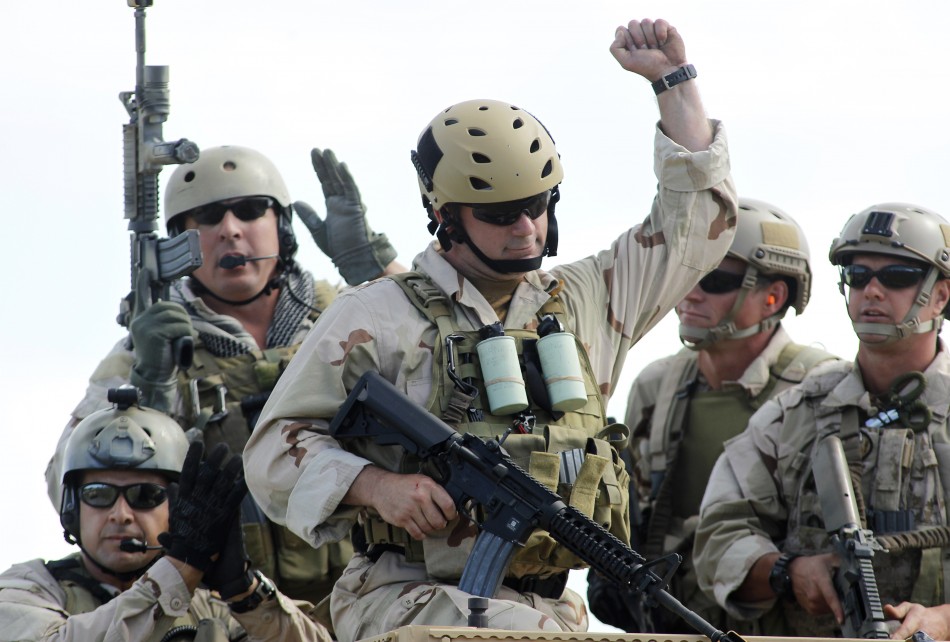
The Somali coast, a volatile region, has seen numerous Navy SEAL Team operations. Understanding past missions, their tactics, and outcomes, as well as the evolving technological landscape, is crucial to appreciating the complexities of such operations. Analyzing hypothetical scenarios and real-world examples provides valuable insights into the challenges and successes of these missions.
Hypothetical Mission Scenario
A high-value target, a known arms trafficker operating from a remote coastal compound in Somalia, is identified. Intelligence suggests the target has close ties with local militia groups and possesses advanced weaponry. The mission objective is to neutralize the target without escalating the conflict with local communities. Navy SEAL Teams, supported by a Special Operations Aviation Command (SOAC) detachment and intelligence assets, will conduct a multi-phase operation.
Initial reconnaissance will identify the compound’s layout, potential escape routes, and the presence of any local civilians. A coordinated insertion will be executed under the cover of darkness, utilizing specialized infiltration techniques. Teams will secure the compound, apprehend the target, and collect intelligence. The extraction will be equally complex, demanding meticulous planning to mitigate risks from ambush and local resistance.
The Navy SEAL team’s daring raid on the Somali coast was a complex operation, demanding precise execution and high-stakes decision-making. Interestingly, recent geopolitical shifts, like the ongoing relationship between Guatemalan President Giammattei and the United States government, giammattei estados unidos guatemala , might indirectly influence similar future operations. Ultimately, these types of high-profile actions, like the Somalia raid, remain critical components of global security strategy.
The teams must consider the potential for collateral damage and maintain the utmost respect for local customs and laws.
Past Operation Example: Operation Ghost
Operation Ghost, a 2019 mission, exemplifies the complexities of such operations. The objective was to neutralize a known terrorist cell operating from a coastal village. Teams utilized a combination of reconnaissance drones, maritime surveillance, and close-quarters combat techniques. The tactics included utilizing specialized maritime assets for reconnaissance, infiltrating the village under the cover of night, and employing precision targeting techniques.
Role of Technology
Technology plays a critical role in the success of these operations. Advanced reconnaissance drones provide real-time intelligence, allowing for precise targeting and minimizing collateral damage. Communications technology allows for rapid and secure information exchange among teams, while specialized maritime assets improve surveillance and provide safe transit options. The use of night vision equipment and other advanced technologies allows teams to operate in challenging environments with reduced visibility.
For example, advanced communications systems have dramatically improved coordination and decision-making during operations in the region, enabling real-time intelligence sharing and tactical adjustments.
Operational Security Challenges
Maintaining operational security in Somalia presents significant challenges. The region’s complex political landscape, the presence of numerous armed groups, and the potential for infiltration by hostile actors require constant vigilance and adaptability. Teams must remain aware of their surroundings and avoid actions that could jeopardize the mission or reveal their presence. Close coordination with local partners is essential, but requires careful consideration to avoid compromising intelligence sources or inadvertently creating conflicts.
Rigorous debriefings and post-operation assessments are vital to identifying lessons learned and enhancing future operations.
Operational Summary Table
| Mission Description | Tactics Used | Challenges Encountered | Outcome |
|---|---|---|---|
| Neutralizing a terrorist cell operating from a coastal village. | Reconnaissance drones, maritime surveillance, close-quarters combat, specialized maritime assets. | Complex political landscape, presence of armed groups, potential for infiltration, risk of collateral damage. | Successful neutralization of the terrorist cell, with no significant casualties among the SEAL Teams or local population. |
Regional Geography and Environment: Navy Seal Team Somalia Coast
The Somali coast, a complex and dynamic environment, presents unique challenges for naval operations. Understanding the intricate interplay of geographical features and environmental factors is crucial for successful missions. From the unpredictable weather patterns to the treacherous coastline, these elements significantly influence the effectiveness of naval strategies. Navigating these waters demands a profound understanding of the local terrain and the ever-changing weather conditions.
Geographical Features of the Somali Coast
The Somali coastline is characterized by a diverse array of geographical features that impact naval operations. These features necessitate careful planning and execution.
The Navy SEAL team’s daring raid on the coast of Somalia was a remarkable feat of military precision. It’s fascinating how these missions, like the one in Somalia, are sometimes compared to, say, the intense action in a movie like one featuring Godzilla, Oppenheimer, and a heron boy, a somewhat unusual combination, in godzilla oppenheimer heron boy.
Ultimately, however, the focus returns to the real-world heroism of the SEAL team in these situations.
- Extensive Coastline with Varied Terrain: The coastline is long and stretches across various terrains, including sandy beaches, rocky outcrops, and inlets. This variability makes navigation challenging, particularly in areas with limited visibility. Some areas offer potential hiding places for adversaries, demanding careful reconnaissance and surveillance.
- Abundant Coral Reefs and Shallow Waters: Coral reefs and shallow waters abound along much of the Somali coast. These features pose significant obstacles to large naval vessels, demanding careful navigation and potentially increasing the risk of grounding or collisions.
- Presence of Estuaries and Lagoons: The presence of estuaries and lagoons introduces additional complexity. These areas can be havens for small craft, complicating the task of patrolling and potentially providing concealment for hostile elements.
- Numerous Islands and Archipelagoes: The Somali coast includes numerous islands and archipelagoes, each with its own challenges. Navigating around these islands requires meticulous charting and planning, and could potentially limit the maneuverability of vessels.
- Coastal Currents and Tides: Strong currents and unpredictable tides are a factor in the Somali region. These elements can significantly impact the speed and direction of vessels, making navigation and planning more difficult. Understanding the interplay of currents and tides is crucial for operational planning and execution.
Environmental Factors Affecting Naval Operations, Navy seal team somalia coast
Weather patterns and sea conditions significantly impact naval operations. Accurately anticipating and mitigating these effects are paramount for mission success.
- Unpredictable Monsoon Seasons: The region experiences unpredictable monsoon seasons, characterized by heavy rainfall, strong winds, and rough seas. These conditions can disrupt operations and make navigation dangerous, impacting the effectiveness of patrols and search operations.
- Frequent Cyclones and Storms: The Somali coast is susceptible to frequent cyclones and storms, which can cause severe weather events, including high winds, torrential rains, and large waves. These storms can significantly limit visibility and make navigation extremely dangerous, necessitating proactive measures to mitigate their effects.
- Varied Sea Conditions: The Somali Sea’s sea conditions are known to fluctuate, ranging from calm to extremely rough. These variations affect the operation of naval vessels, and the deployment of assets. Understanding these fluctuations is crucial for operational planning.
- Limited Visibility: Fog and haze are common, particularly in the coastal areas, significantly limiting visibility. Reduced visibility impacts the ability of vessels to observe and identify potential threats or friendly forces, making communication and coordination more difficult.
Importance of Understanding Local Geography and Environment
The precise knowledge of the Somali coast’s geography and environment is crucial for successful naval operations. Failure to adequately consider these factors can lead to significant setbacks or even catastrophic consequences.
- Operational Efficiency: Understanding the terrain and weather patterns enables optimized operational strategies, minimizing risks and maximizing effectiveness. This knowledge directly impacts operational efficiency.
- Minimizing Risks: A deep understanding of the environment allows naval forces to anticipate potential hazards and plan accordingly. This proactive approach helps minimize risks associated with challenging weather conditions and navigational obstacles.
- Improved Safety: Thorough environmental assessments ensure the safety of personnel and equipment. This translates to a more efficient and effective operation.
Challenges Posed by Terrain and Weather Conditions
The terrain and weather conditions present significant challenges to naval operations in the Somali region. These challenges must be addressed through comprehensive planning and adaptation.
- Navigation Difficulties: The unpredictable currents, shallow waters, and coral reefs present significant navigation challenges for naval vessels. This necessitates advanced navigation systems and meticulous planning to avoid grounding or collisions.
- Communication Limitations: The variability of weather conditions can disrupt communication between naval assets. This can impact the coordination of operations and the rapid response to emerging situations.
- Limited Infrastructure: Limited infrastructure in the region can hinder the support and sustainment of naval operations. The lack of readily available facilities and resources can create logistical challenges.
Epilogue
In conclusion, Navy SEAL Team operations in the Somali coast underscore the complexities of modern warfare. The challenges encountered highlight the importance of adaptability, intelligence gathering, and international cooperation. While the region’s future remains uncertain, the lessons learned from these operations will undoubtedly shape future naval strategies. The impact on the Somali coast, though complex, ultimately shapes the regional landscape in significant ways, a testament to the importance of ongoing security initiatives.
FAQ Compilation
What specific types of threats do SEAL Teams face in Somalia?
SEAL Teams in Somalia face a multifaceted threat environment, including piracy, armed groups, and potential terrorist activities. Their operations often require adaptability and vigilance to counter these diverse threats.
What is the role of intelligence gathering in SEAL Team missions in Somalia?
Intelligence gathering is paramount to SEAL Team success in Somalia. It allows them to anticipate threats, plan effective strategies, and minimize risks.
What are some of the environmental challenges faced by SEAL Teams in the region?
The Somali coast’s challenging geography and weather patterns, including unpredictable weather, currents, and limited infrastructure, pose considerable operational obstacles for SEAL Teams.
How has piracy influenced naval operations in the region?
The rise of piracy in the region has significantly impacted naval operations. It has prompted increased naval presence, specialized counter-piracy tactics, and enhanced collaboration among international forces.

